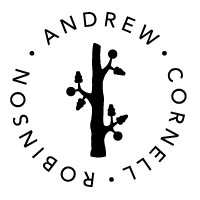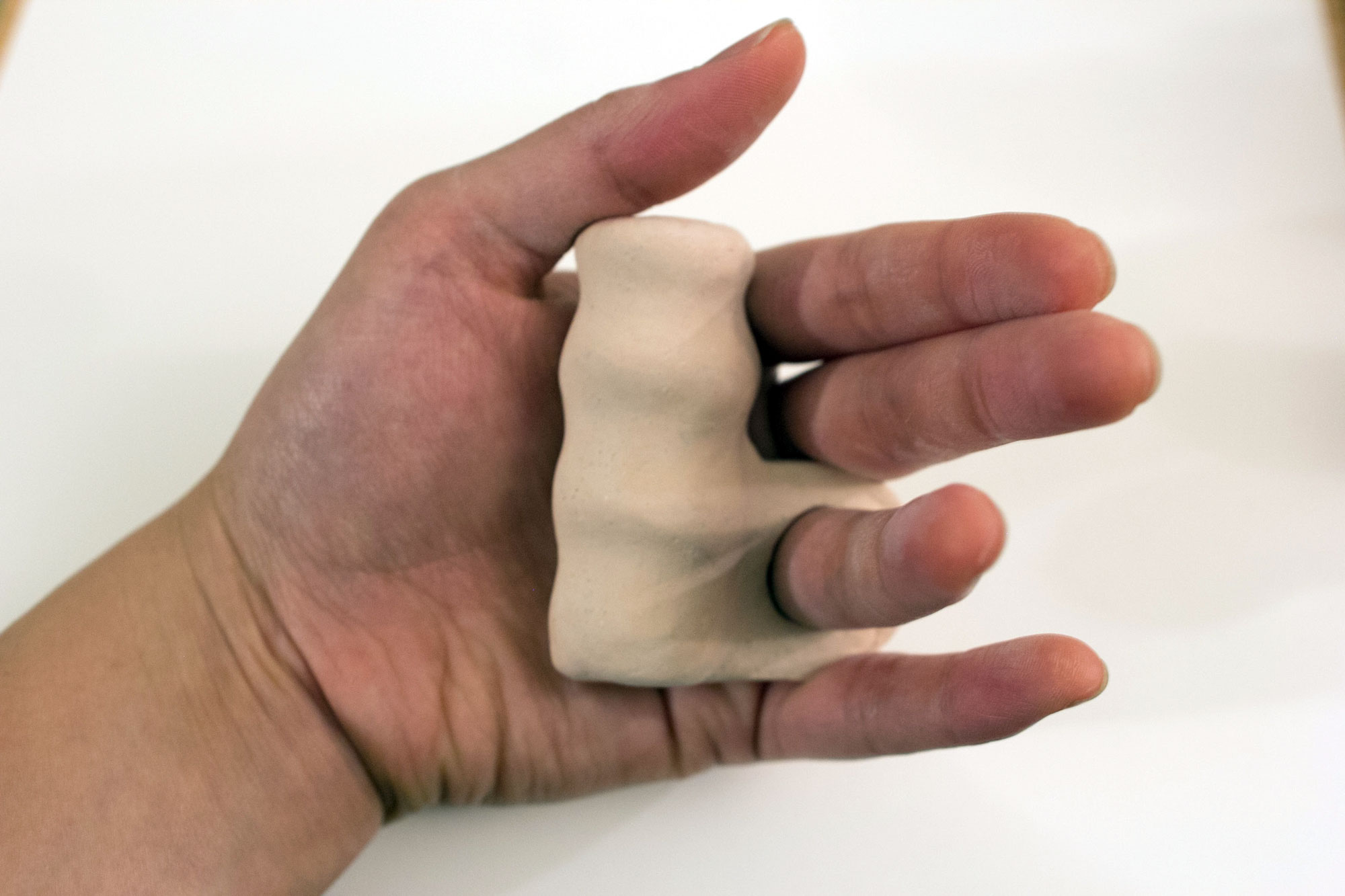Course Description This graduate level ceramic studio is open to first-time ceramic users as well as more experienced students. The course introduces low and high-volume ceramic manufacturing methods used in product design through basic hands-on model making workshops. Projects explore a wide range of use. Students learn plaster mold making skills utilizing single, multi-piece, open as well as closed molds. Technical topics include accounting for clay shrinkage through calculation, appropriate selection of clay type, and both specifying as well as applying glazes. Slip casting, extruding and press molding assignments although material specific, introduce students to more universal processes in liquid and plastic state forming. Understanding ceramics will assist student comprehension of other production processes such as plastic rotational modeling or press forging. Students may incorporate 3D printing and CNC methods towards their projects.
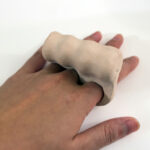
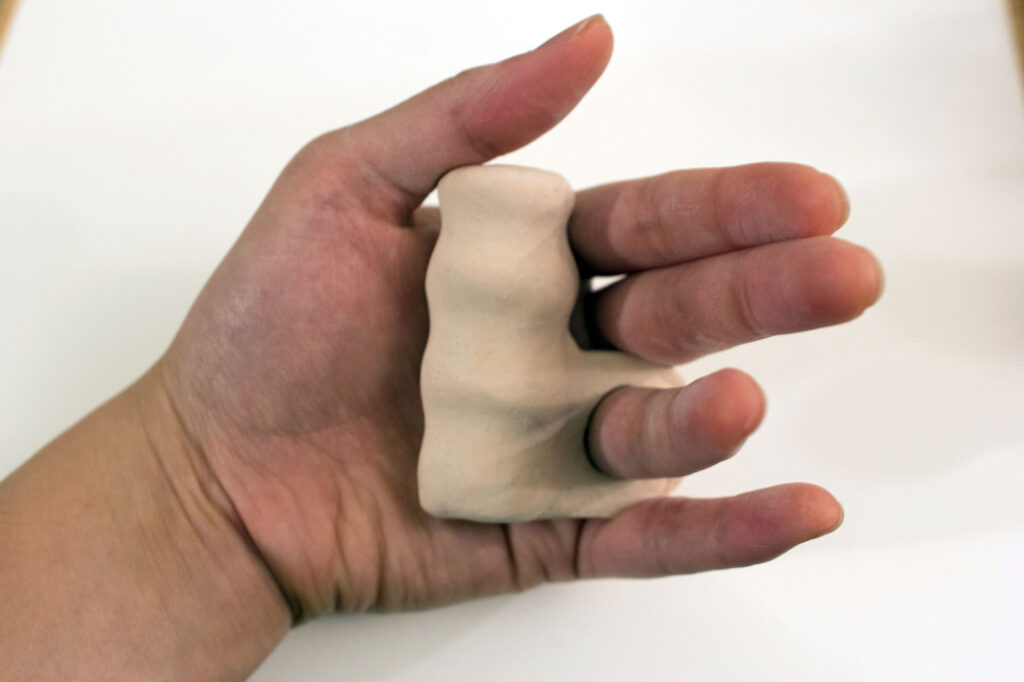
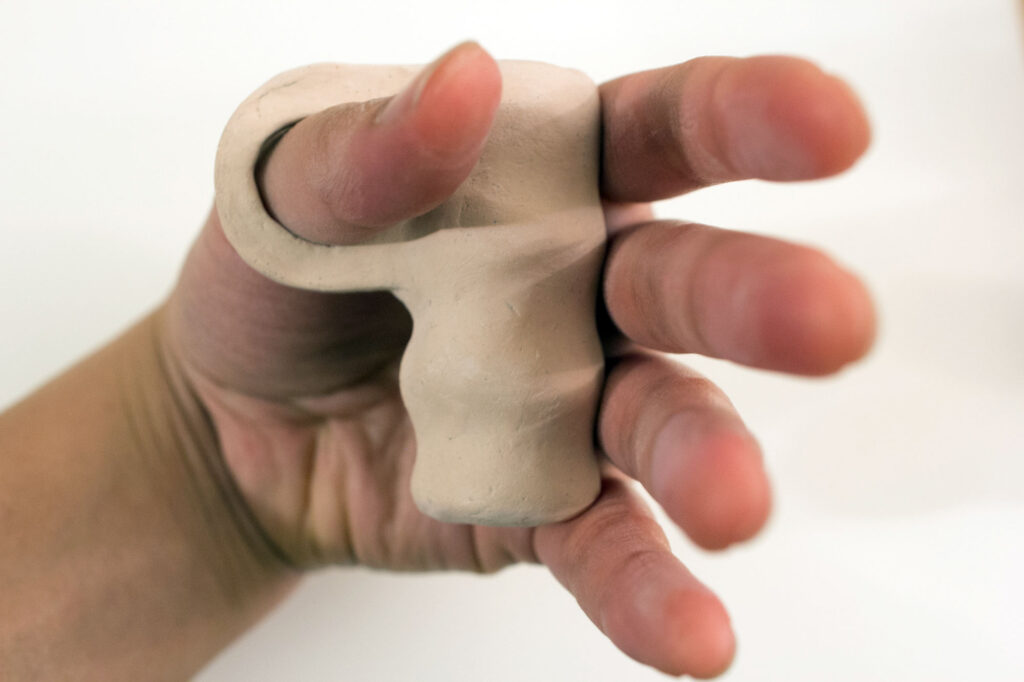
Projects Students will explore ceramic materials, design research and form making methods in class demos and workshops. This work will be expanded upon through a series of projects.
1. Making Sense (independent project) Over the course of the semester we will ideate, plan, design and develop speculative artifacts with ceramic materials that respond to a self-directed creative brief, which uses the five senses (sight, touch, smell, sound, taste) as a starting point for creative exploration. Artifacts created as design speculations maybe fictional, and/or functional, but most of all thoughtfully designed and made; they facilitate imagining and help us entertain ideas about everyday life that might not be obvious. They help us think about alternative possibilities— they challenge the ideals, values, and beliefs of our society embodied in material culture. Our objective is to explore our five senses, and embody them in the creation of a series of speculative ceramic artifacts. Research for this project will include multiple material, glaze, and form explorations. This will culminate in a body of iterative works with at least twelve (12) and up to twenty-four (24) artifacts that explore one or more of our senses.
Create a series of ceramic artifacts explorations that explore a sense.
- Sight
- Sound
- Smell
- Touch
- Taste
2. Explorations in Clay (methods and material research) The second project includes a series of brief assignments in response to in-class demos of various forming methods and culminates in an independent project that is a poetic or practical exploration of form and making methods in ceramic materials. While we will learn multiple methods in class, each student will select a making method(s) to focus on in forming ceramic materials. Methods include: hand building with slab, coil, modeling, carving; wheel throwing; extrusions; mold making such as stamping, sprigging, slumping, draping, press, and slip casting; surface design with slip trailing, underglaze, glaze, burnish, and sgraffito. This will culminate in a series of method and material research, as well as a body of work with at least a dozen (12) or more artifacts, and multiple glaze tests.
Both of these projects will culminate in documentation of desk and studio research, process documentation, sketches, photography, models, mood boards, material samples, prototype(s), and self-assessment.
3) Research The third series of projects are focused on research into historical and contemporary examples of ceramic materials in art and design. This will include periodic visits to exhibitions, and local sites with examples of ceramic materials in situ. It will also include desk research in libraries (Donghia Healthier Materials Library, the New School Library, and the NYU Bobst Library, etc.), class readings, and digital resources via Canvas. There will be one optional field trip planned for a Raku kiln firing workshop outside of class time. Your participation in the off-site workshop is optional but encouraged. This event will occur mid to late spring. More info to follow in class.
Course outline
| 1 | 1/23 | Hello Syllabus Demo: wedging, clay forming with pinch, coil and slab. Discuss ceramic material properties, forming methods, and recommended tools Discuss orthographic drawing and demo using tar paper templates. Required studio orientations for ceramics and plaster tier 1. Both online and in-person. | 1. Making Sense: DISCOVERY Brainstorm ideas, and create sketches, begin to pin up images, color swatches, textures forms, and sample materials that interest you and might inform your independent work in this class. 2. Explorations in Clay Draw an orthographic drawing of a form from top, bottom, left and right sides. Make this drawing into a craft-paper model. Small (between 3-6 cubic inches) models in clay of the same form made in each of the following methods: 1 coil form 1 slab form 1 pinch form Also make a firing tray slab to fit each of your three models. 3. Research Go to the New School and/or NYU Bobst libraries and borrow some books about ceramic history, art, artists, designers or methods that interest you. Bring them to our next class to share and discuss. Featured Makers: Raven Halfmoon and Simone Leigh |
| 2 | 1/30 | Make tile samples of each clay Demo- clay forming on the wheel, Centering, Throwing Cylinders Demo and studio orientation for ceramics tier 2 working on the wheel | 1. Making Sense: RESEARCH Reflecting upon your research, and discovery compose a physical mood board (in real life, not on the computer please) that explores color, form, and aesthetics. Include examples of materials, textures, forms, glaze colors, etc. 2. Explorations in Clay Produce at least 4 Cylinders, and at least 2 bowls. 5-10 test tiles exploring textures Reading handout: Test Tiles and Shrink Tests 3. Research Visit the Metropolitan Museum of Art in person to look at any of the many ceramic collections on view. Choose one ceramic object from the collections and research the various traditions, materials and making methods employed in its production. Include a photograph and the accession number for the object you have selected. Featured Maker: Edmund de Waal |
| 3 | 2/6 | Demo Turning, The Foot Discussion, considering the foot of your form; Demo turning a foot on the wheel Demo – Underglazes, Glaze samples, and glaze application techniques, and wax resist, colored slips and clays, slip trailing, and using the glaze spray booth | 1. Making Sense: IDEATION Create refined sketches and at least one orthographic drawing of a form you want to prototype, make glaze and texture test tiles, and reflect on and revise mood board. 2. Explorations in Clay Trim feet on 4 cylinders and 2 bowls. Explore carving, chattering, or sgraffito surface experiments. Get all greenware completed and bone-dry for bisque cone 06. 3. Research Research commercial ceramic materials. Materials to consider include: Mason Stains, commercial glaze samples for Cone 6 oxidation. See a list of vendors on Canvas. Discuss with professor prior to ordering glazes. Featured Maker: Brian Rochefort |
| 4 | 2/13 | Plaster – mixing, making a plaster model | 1. Making Sense: MODELS Work on three-dimensional sketch models in clay using the forming method of your choice. Over the next few weeks create multiple iterative models exploring form and the ideas you define for your indendent project. 2. Explorations in Clay Cast a 1lb plaster block using cottle boards. Create an orthographic drawing of a 3d form, and transfer the drawings to the plaster block. Using the plaster carving tools, a rasp, and/or wet sanding paper, carve the 3d form out of the plaster to create a smooth form with few or no undercuts. 3. Research Featured Makers: Eva Zeisel and Bari Ziperstien |
| 2/20 | PRESIDENT’S DAY NO CLASS | ||
| 5 | 2/27 | Review Plaster models Demo – mold making 1: sprig, stamp, hump, and slump forming | 2. Explorations in Clay Revise plaster models in preparation for mold making. Create at least 1 sprig / stamp molds for press-molding, and a 1 hump or slump mold. 3. Research Featured Makers: Kate Malone and Hitomi Hosono |
| 6 | 3/6 | Demo – mold making 2: drop molds and multi-part slip casting molds | 1. Making Sense: Mid Term Presentation Prepare your Discovery, Ideation, Models and Mood board for midterm review. 2. Explorations in Clay Using your plaster model, create a multi-part plaster slip casting mold. Glaze bisque ware to cone 6 in preparation for mid term 3. Research Featured Makers: Klein Reid and Heath Ceramics |
| 3/13 – 3/19 | SPRING BREAK NO CLASS | ||
| 7 | 3/20 | Mid Term Student presentations 1 Making Sense visual and material research, mood board, and clay prototypes 2 Explorations in Clay review and reflect upon all of our material and method deliverables | 1. Making Sense PLAN + PROTOTYPES Prepare a project plan / schedule. Include notes, documentation, sketches, material and forming research, surface treatments and glaze tests, making, drying, and kiln firing dates. Using a method of your choice and insights from your material and visual research, create multiple (12) prototypes for your independent project. Featured Maker: Bernard Palissy |
| 8 | 3/27 | Demo Slip Casting, and Colored Slips | 2. Explorations in Clay Produce at least two slip cast forms from your mold 3. Research Featured Maker: Kathy Butterly |
| 9 | 4/3 | Demo Handles | 1. Making Sense: Final project work 3. Research Featured Maker: Hella Jongerius |
| 10 | 4/10 | Demo Lids | 1. Making Sense: Final project work 3. Research Featured Maker: Andile Dyalvane |
| 11 | 4/17 | Demo Pouring lips, and spouts | 1. Making Sense: Final project work, begin documentation 3. Research Featured Maker: Rubi Neri |
| 4/22 *Sat. | Class Offsite Raku Workshop. | Raku Workshop weather permitting | |
| 12 | 4/24 | Demo marbling clay, and agateware | 1. Making Sense: Final project work 3. Research Featured Maker: Michelle Ericksen at the Victoria and Albert Museum |
| 13 | 5/1 | Check in with faculty about documentation, research and final project progress. | 1. Making Sense: Final project work and documentation 3. Research Featured Maker: Paul S Briggs |
| 14 | 5/8 | Work in class on final project and preparation for final review. | 1. Making Sense: Final project work, and complete final presentation 3. Research Featured Maker: Nampeyo |
| 15 | 5/15 | Final Project Review |
Course Readings, Materials, and Technology Requirements
Recommended Reading
- Bechthold, Martin; Kane, Anthony; King, Nathan; and de Gruyter, Walter. Ceramic Material Systems : In Architecture and Interior Design, Birkhauser Architecture, 2015.
- Britt, John. Is it Food Safe?, class hanlout, PDF.
- Britt, John. The Complete Guide to Mid-Range Glazes: Glazing and Firing at Cones 4-7, Union Square & Co, 2014.
- Hanaor, Ziggy. Breaking the Mould: New approaches to ceramics, Black Dog Publishing, 2007.
- Lefteri, Chris. Making It: Manufacturing Techniques for Product Design, 3rd Edition, Laurence King Publishers, 2019.
- Martin, Andrew. The Essential Guide to Mold Making & Slip Casting, Lark Ceramics Book, 2007.
- Morris, Tom. New Wave Clay: Ceramic Design, Art and Architecture, Frame Publishers, 2018.
- Quinn, Anthony. Ceramic Design Course, B.E.S. Publishing, 2007.
- Rhodes, Daniel. Clay and Glazes for the Potter, Martino Fine Books, 2015.
- Biswas, Allie, et al. Strange Clay: Ceramics in Contemporary Art, Hatje Cantz, January 2023.
- Scott, Marylin. Potter’s Bible, An Essential Illustrated Reference for both Beginner and Advanced Potters, Chartwell Books, 2006.
- Taylor, Louisa. Ceramics Master Class, Thames & Hudson, July 2020.
- Weiss, Mellissa. Handbuilt, A Potter’s Guide: Master timeless techniques, explore new forms, dig and process your own clay, Rockport Publishers, November 20, 2018.
- The Chicago Manual of Style, 17th Edition, The University of Chicago Press Editorial Staff, September 5, 2017. This is the required style guide for Parsons.
Additional readings will be announced via Canvas and made available on reserve in the NSU Library.
Materials and Supplies
- Sketchbook/Notebook
- Pencil
- Thumbdrive for storing photographs, project files, presentations, etc.
- Clay (our studio offers various white and brown stoneware, as well as porcelain, and a slip-casting clay; and all are fired to cone 6 oxidation)
- Plaster
- Clay Tools Kit (A wire end modeling tool, metal, wood, rubber and/or silicone ribs, wire, pin tool, carving tools, small sponge, etc.)
- Apron
- Wet Sanding Sponge, Wet-Dry Sandpaper, Sanding Screen
- Multiple plastic containers with lids
- Plastic wrap for covering work in progress. Dry-cleaning plastic works well.
- Soft brushes of various sizes for glazing
- Variable commercial glazes, underglazes, and slips based on the needs of the students’ material research.
- Clay and some tools can be purchased through the school. Selected vendors and supplies are listed on Canvas. You are encouraged to purchase your own tools, specialty ceramic glazes and related materials.
Addendum
Tools and Materials

Purchase a “Single Wire End Modeling Tool.” I suggest getting a 9 to 13 inch tool. It looks like this… and you can purchase one from the Compleat Sculptor. et al
By our first class you will want to have these tools. From left to right: Wiretool, Wood Rib, carving tools large and medium, pin tool, wood knife/modeling tool, a metal kidney shaped rib, a small sponge, and below a fettling knife.


You may acquire most of these items in a “clay tool kit” from the school online store https://epay.newschool.edu/C21120_ustores/web/store_main.jsp?STOREID=53, Dick Blick, or any of the other suppliers below.
- Compleat Sculptor. is located in NYC at 110 West 19th Street.
T. (212) 243-6074. Monday – Thursday 10-8pm; Friday – Sunday 10-6pm. - Ceramic Supply. is located in NJ at 7 Route 46 West , Lodi, New Jersey, 07644
T. (973) 340-3005 x 501 or (800) 723-7264 Monday through Friday, 9:00am – 5:00pm and the 2nd Saturday of each month, 10am – 3pm. - Bailey Ceramic Supplies and Equipment. is located at 62-68 Ten Broeck Ave, Kingston, NY 12401. T. (800) 431-6067 Monday through Friday 9am – 4:30pm EST and they are open 10 am – 2 pm First Saturday of the month
- Sculpture House
You may also want to have…
- Soft brushes of different sizes.
- Containers such as plastic deli containers with lids for storing slip and slurry.
- 1 Sketch Book, wire bound, 12″ x 9″, 100 pages, Item # 12494-1103 (Links to an external site.)Links to an external site., or # 10322-1003 (Links to an external site.)Links to an external site., or # 10642-1023 (Links to an external site.)Links to an external site.
- Sharpie and Black ink liner pens, medium point (0.3 – 0.6 mm). They are inexpensive, they have beautiful acid free black ink. You will be doing allot of drawing so get a bunch. I recommend Pelikin (Links to an external site.)Links to an external site., Micron (Links to an external site.)Links to an external site., or Faber-Castell (Links to an external site.)Links to an external site.
- Pencils any of in the following types 2B (Links to an external site.)Links to an external site., 3B (Links to an external site.)Links to an external site., 4B (Links to an external site.)Links to an external site., 6B (Links to an external site.)Links to an external site., HB (Links to an external site.)Links to an external site.
- Pencil Sharpener hand held, eg. Item # 21430-1001 (Links to an external site.)Links to an external site.
- 1 Staedtler Mars Plastic Eraser Item # 21500-0000 (Links to an external site.)Links to an external site.
- Tape: Duct tape/packaging tape/masking tape if using jigger or creating cardboard vessel
- A Digital Camera and extra storage cards. Note you may borrow cameras from the Equipment Center on campus.
- A Portable hard drive to back up your digital files. This is an essential tool that you will use through out your education and beyond. Best Buy (Links to an external site.)Links to an external site. or Adorama (Links to an external site.)Links to an external site. offer a variety of models.
Learning Outcomes
By the successful completion of this course, students will be able to:
- Demonstrate an UNDERSTANDING of forming methods for and material properties of clay, glazes, ceramic surface treatments, plaster, and kiln firing methods.
- Demonstrate COMPETENCE about the historical precedents that inform material and spatial concepts today.
- Demonstrate STRENGTH in the rapid creation and exploration of three-dimensional form in concept development
- Demonstrate COMPETENT skills in managing a complex project involving multiple overlapping tasks
- Demonstrate a STRONG, personal, iterative process for developing a prototype that considers functional, fiscal and environmental viability and user experience
- Display STRENGTH in the safe use of Wet-shop facilities, knowledge of procedures, and collegial etiquette in a fabrication environment.
- STRENGTH in their reflection on creative skills learned, choices made, and connections fostered between learning initiatives throughout the semester.
